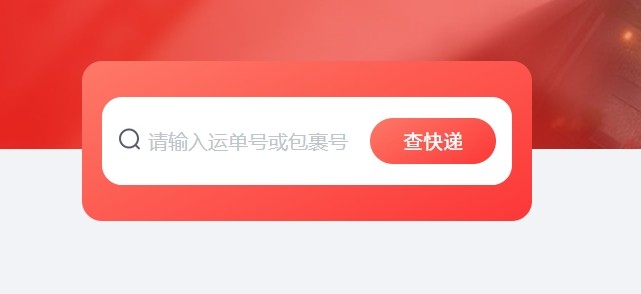Terminology of HTTP Protocol(from RFC2616)
时间:2006-02-24 来源:erylee
connection A transport layer virtual circuit established between two programs for the purpose of communication. message The basic unit of HTTP communication, consisting of a structured sequence of octets matching the syntax defined in section 4 and transmitted via the connection. request An HTTP request message, as defined in section 5. response An HTTP response message, as defined in section 6. resource A network data object or service that can be identified by a URI, as defined in section 3.2. Resources may be available in multiple representations (e.g. multiple languages, data formats, size, and resolutions) or vary in other ways. entity The information transferred as the payload of a request or response. An entity consists of metainformation in the form of entity-header fields and content in the form of an entity-body, as described in section 7. representation An entity included with a response that is subject to content negotiation, as described in section 12. There may exist multiple representations associated with a particular response status. content negotiation The mechanism for selecting the appropriate representation when servicing a request, as described in section 12. The representation of entities in any response can be negotiated (including error responses). variant A resource may have one, or more than one, representation(s) associated with it at any given instant. Each of these representations is termed a `varriant'. Use of the term `variant' does not necessarily imply that the resource is subject to content negotiation. client A program that establishes connections for the purpose of sending requests. user agent The client which initiates a request. These are often browsers, editors, spiders (web-traversing robots), or other end user tools. server An application program that accepts connections in order to service requests by sending back responses. Any given program may be capable of being both a client and a server; our use of these terms refers only to the role being performed by the program for a particular connection, rather than to the program's capabilities in general. Likewise, any server may act as an origin server, proxy, gateway, or tunnel, switching behavior based on the nature of each request. origin server The server on which a given resource resides or is to be created. proxy An intermediary program which acts as both a server and a client for the purpose of making requests on behalf of other clients. Requests are serviced internally or by passing them on, with possible translation, to other servers. A proxy MUST implement both the client and server requirements of this specification. A "transparent proxy" is a proxy that does not modify the request or response beyond what is required for proxy authentication and identification. A "non-transparent proxy" is a proxy that modifies the request or response in order to provide some added service to the user agent, such as group annotation services, media type transformation, protocol reduction, or anonymity filtering. Except where either transparent or non-transparent behavior is explicitly stated, the HTTP proxy requirements apply to both types of proxies. gateway A server which acts as an intermediary for some other server. Unlike a proxy, a gateway receives requests as if it were the origin server for the requested resource; the requesting client may not be aware that it is communicating with a gateway. tunnel An intermediary program which is acting as a blind relay between two connections. Once active, a tunnel is not considered a party to the HTTP communication, though the tunnel may have been initiated by an HTTP request. The tunnel ceases to exist when both ends of the relayed connections are closed. cache A program's local store of response messages and the subsystem that controls its message storage, retrieval, and deletion. A cache stores cacheable responses in order to reduce the response time and network bandwidth consumption on future, equivalent requests. Any client or server may include a cache, though a cache cannot be used by a server that is acting as a tunnel. cacheable A response is cacheable if a cache is allowed to store a copy of the response message for use in answering subsequent requests. The rules for determining the cacheability of HTTP responses are defined in section 13. Even if a resource is cacheable, there may be additional constraints on whether a cache can use the cached copy for a particular request. first-hand A response is first-hand if it comes directly and without unnecessary delay from the origin server, perhaps via one or more proxies. A response is also first-hand if its validity has just been checked directly with the origin server. explicit expiration time The time at which the origin server intends that an entity should no longer be returned by a cache without further validation. heuristic expiration time An expiration time assigned by a cache when no explicit expiration time is available. age The age of a response is the time since it was sent by, or successfully validated with, the origin server. freshness lifetime The length of time between the generation of a response and its expiration time. fresh A response is fresh if its age has not yet exceeded its freshness lifetime. stale A response is stale if its age has passed its freshness lifetime. semantically transparent A cache behaves in a "semantically transparent" manner, with respect to a particular response, when its use affects neither the requesting client nor the origin server, except to improve performance. When a cache is semantically transparent, the client receives exactly the same response (except for hop-by-hop headers) that it would have received had its request been handled directly by the origin server. validator A protocol element (e.g., an entity tag or a Last-Modified time) that is used to find out whether a cache entry is an equivalent copy of an entity. upstream/downstream Upstream and downstream describe the flow of a message: all messages flow from upstream to downstream. inbound/outbound Inbound and outbound refer to the request and response paths for messages: "inbound" means "traveling toward the origin server", and "outbound" means "traveling toward the user agent"RFC2616
相关阅读 更多 +
排行榜 更多 +










